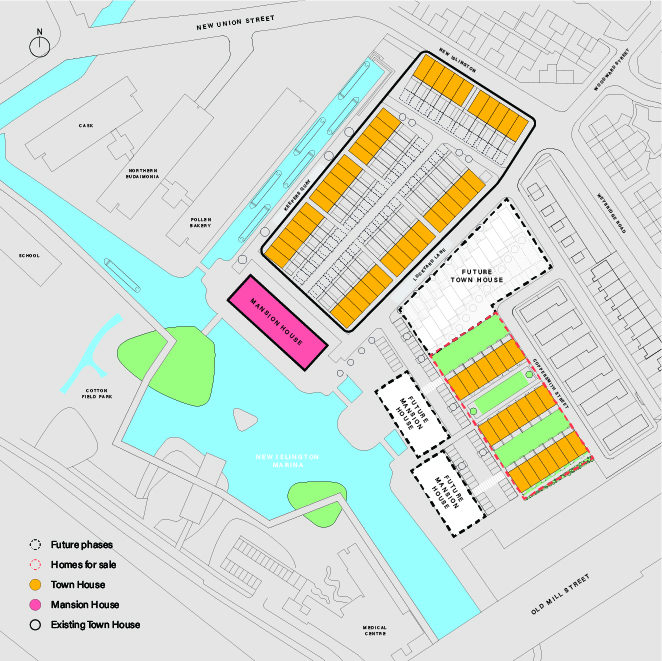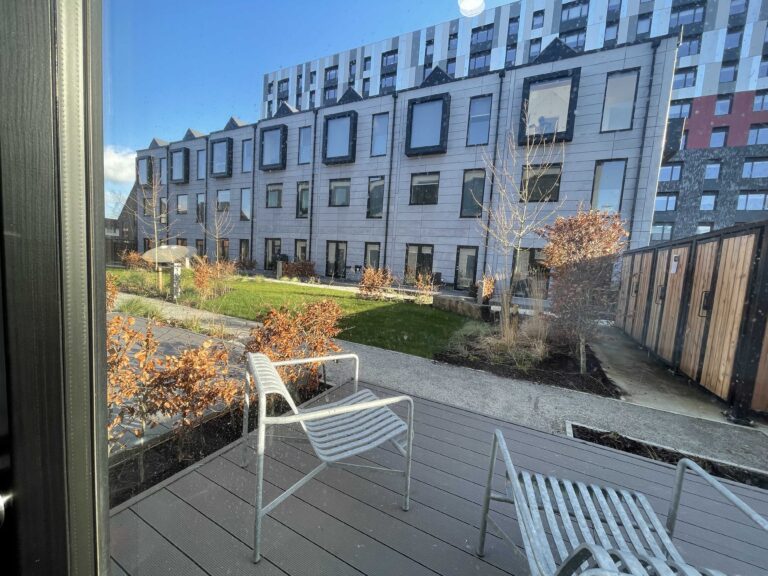Hi, Gabie. Thank you for your impressive blog. You have analysed in detail the success of this case. Indeed, I think the success of this region depended on the policy and the final implementation being agreed upon, which is what made it successful. East Manchester urban regeneration program involves three areas of action mutually interrelated: urban quality (Neighborhood and Places Framework), training and community (People and Community Framework), economy and employment (Economy and Employment Framework) [48] .
In particular, the sub – program Neighborhood and Places Framework [48, 59, 60] coordinates the actions related to the physical regeneration of the area including the increase of urban quality in terms of housing supply and services, enhancement of mobility and connectivity with the rest of the city’s historical heritage and biodiversity, reduction of environmental impact of new buildings.
The sub-program People and Community Framework [48, 61, 62] is aimed at ensuring an adequate level of schooling, involves families in concrete action related to the redevelopment of the neighborhood, accompanies both young and adults in the professional world, promotes awareness about the adoption of a healthy and sustainable lifestyle.
References:
2008–2018 East Manchester Strategic Regeneration Framework: Revised Targets, 2011, available at: http://www.manchester.gov.uk/download/meetings/id/12140/9_revised_targets_for_the_2008_%E2%80%93_2018_east_manchester_strategic_regeneration_framework_and_the_201112_to_201314_new_east_manchester_implementation_plan (accessed 17/12/2014)
Progressive urban regeneration project: Manchester (2)

In the last post, we looked at the urban regeneration project in New Islington, Manchester. To brief recap, a marina, school, medical centre, and numerous homes were designed and commercial units on the ground floor and the communal gardens in the latest row of the townhouse were also created in order to create a “sense of place”. As a result, New Islington has become a successful case of Urban Regeneration. Working with existing infrastructure is also the main factor that New Islington’s successful development as we can see in the Ancoats area.
Creating mixed-use destinations that meet community needs and aspirations can be a resilient resolution. These connected communities should include residential, medical, leisure and entertainment facilities, as the net need for existing retail space declines (Landsec, 2020). According to JLL’s research, there is a 25% oversupply of retail space in the UK. This oversupply means that there is a growing amount of space that is no longer required by retailers and is increasingly becoming empty for long periods of time. (Landsec, 2020). To mitigate this phenomenon, Urban Splash, the developer of New Islington, has been very selective in filling its commercial slots. “We are massively about finding the right people, rather than the ones that are going to pay the highest rent.” Nicky Harris, Urban Splash’s commercial portfolio manager said.



Lesson from New Islington
What I learned from New Islington is public space can benefit from creating communities and producing additional long-term values. Housing that will help to foster communities in the long term can ultimately provide benefit to residents by making public space enrichment. For instance, the way how residential, leisure and entertainment facilities interact through proposed public open spaces in New Islington is reflecting new trends and behaviours, such as the need to work flexibly or have a net positive environmental impact. It is also worth noting that the private gardens that can be seen in traditional townhouses are gone. Instead, these houses offer a private porch that overlooks a communal garden. This shared garden which is first tried out at its Port Loop development in Birmingham by Urban Splash helps craft that neighbourhood feel. In addition, the mansion house uses eco-friendly materials that naturally store carbon dioxide, and the floor plan is designed to help you get to know your neighbours.
In Housing Alternatives, the design studio module for this semester, we are designing housing typologies and considering complementary uses relating to neighbourhood and context to practice in residential neighborhood design. After a field trip to Manchester’s Urban Regeneration Project, I was able to understand building standards and how they are delivered over 20 years in this development. Therefore, the idea that is inspired by New Islington such as using communal spaces and incorporating natural habitats was adapted in my design through the module, Housing Alternatives.


References
– Greenhalgh, Chris. “This Is the Place: Why New Islington Is Now the Best Place to Live in Manchester City Centre.” I Love Manchester, 10 Jan. 2020, ilovemanchester.com/new-islington-best-place-to-live-manchester-city-centre.
– Hatmaker, Julia. “SITE VISIT | Urban Splash’s Latest New Islington Builds.” Place North West, 3 June 2021, www.placenorthwest.co.uk/site-visit-urban-splashs-latest-new-islington-builds/. Accessed 19 May 2022.
– Landsec. “Reimagining Empty Retail Space.” Landsec, 2020, landsec.com/insights/future-trends/reimagining-empty-retail-space. Accessed 19 May 2022.



Hi, Gabie. Thank you for your impressive blog. You have analysed in detail the success of this case. Indeed, I think the success of this region depended on the policy and the final implementation being agreed upon, which is what made it successful. East Manchester urban regeneration program involves three areas of action mutually interrelated: urban quality (Neighborhood and Places Framework), training and community (People and Community Framework), economy and employment (Economy and Employment Framework) [48] .
In particular, the sub – program Neighborhood and Places Framework [48, 59, 60] coordinates the actions related to the physical regeneration of the area including the increase of urban quality in terms of housing supply and services, enhancement of mobility and connectivity with the rest of the city’s historical heritage and biodiversity, reduction of environmental impact of new buildings.
The sub-program People and Community Framework [48, 61, 62] is aimed at ensuring an adequate level of schooling, involves families in concrete action related to the redevelopment of the neighborhood, accompanies both young and adults in the professional world, promotes awareness about the adoption of a healthy and sustainable lifestyle.
References:
2008–2018 East Manchester Strategic Regeneration Framework: Revised Targets, 2011, available at: http://www.manchester.gov.uk/download/meetings/id/12140/9_revised_targets_for_the_2008_%E2%80%93_2018_east_manchester_strategic_regeneration_framework_and_the_201112_to_201314_new_east_manchester_implementation_plan (accessed 17/12/2014)
Gabie, this is a very insightful blog. I want to begin by revisiting the shocking statistic that there is a 25% oversupply of retail space in the UK. Inevitably, economic, societal and environmental consequences will be incurred from this. Thus, it’s resolve should be a UK priority. If you’re interested in this, check out my blog ‘COVID 19; An Unlikely Catalyst for High Street Regeneration’. Here, I explore the changing role of high streets in the UK.
Mixed Use. This concept seems to have been at the crux of almost every urban regeneration project since the turn of the 21st century. This is unsurprising given its ability to facilitate community processes and build resilience (Hoppenbrouwer, E., & Louw, E, 2005). One feature of this resilience that I think you’ll find particularly interesting is safety.
Today, we are fighting a war against crime. In 2021 alone, England and Wales police forces received 1,945,174 reports of violence and sexual offences (Crime Rate, 2021). This is a 7% increase from the year prior. For this reason, mixed use developments become even more important. Active frontages and 24/7 spaces increase visibility. Hence, reducing crime rates significantly (Jane Jacobs, 1961). This idea of active frontages was something that stood out to me when visiting New Islington. Therefore, this idea of safety, specifically female safety within cities, formed one of my design objectives for our design project ‘Housing Alternatives’.
Safety in cities is an issue that needs more attention. I wonder if there could be a lead in creating safety measures within the unused retail spaces I commented on at the start? Could these spaces become ‘safety hubs’ for refuge? Or could they be opened-up in the pursuit of a more permeable, visible urban realm?
References:
CrimeRate (2021) Violence and Sexual Offenses in the UK. Available at: https://crimerate.co.uk/violence-sexual-offences (Accessed: 3rd May 2022).
Hoppenbrouwer, E., & Louw, E. (2005). Mixed-use development: Theory and practice in Amsterdam’s Eastern Docklands. European Planning Studies, 13(7), 967-983. Available from: https://doi.org/10.1080/09654310500242048 (Accessed: 2nd May 2022).
Jacobs, J. (1961). The Death and Life of Great American Cities. New York: Random House.